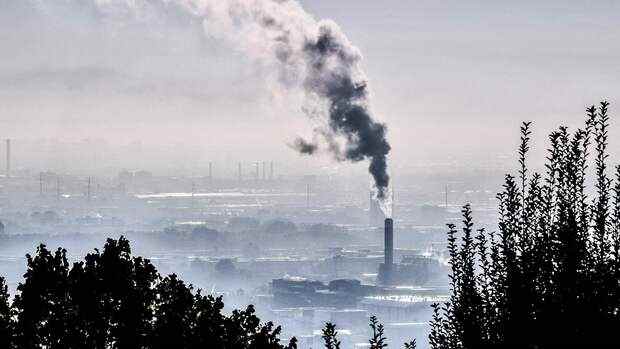Berlin The fossil CO2 emissions continue to rise – contrary to the goals that the countries set themselves in the Paris climate agreement. In 2022 they will be slightly higher than before the corona pandemic.
This is shown by the new report of the Global Carbon Project, in which more than one hundred scientists have contributed. They use data from global measuring networks and satellites, statistical surveys and model calculations and will present their report on Friday at the climate conference in Egypt.
According to their forecast, a total of 36.6 billion tons of CO2 will be emitted worldwide in 2022. That would be around one percent more than in 2021. In addition, there are emissions from land use, which are mainly caused by deforestation of tropical forests, they are 3.9 billion tons.
The figures contradict the goals of the world community: the states want to limit global warming to 1.5 degrees Celsius in pre-industrial comparison. If emissions continue to develop as before, the remaining carbon budget to comply with the 1.5-degree limit will be used up in nine years, the scientists warn.
Top jobs of the day
Find the best jobs now and
be notified by email.
“We see some positive developments, but nowhere near the far-reaching measures that would have to be introduced now to keep global warming well below two degrees,” says Julia Pongratz, Professor of Physical Geography and Land Use Systems at the Ludwig-Maximilians- University of Munich, who contributed to the report.
Jan Christoph Minx, head of the research group Applied Sustainability Research at the Berlin Mercator Research Institute on Global Commons and Climate Change (MCC), spoke of “shocking numbers” and stated: “We are still stuck in the fossil age.”
Climate change: emissions are no longer increasing as quickly
The report also has good news: Long-term growth in carbon emissions has slowed.
24 countries with growing economies have even reduced their emissions in the past decade (2012 to 2021), including Germany, France and Great Britain.
In order to reduce emissions to zero by 2050, the total man-made emissions would have to be reduced by an average of 1.4 billion tons of CO2 per year, the scientists calculate. The decline would thus be as strong as in 2020 due to the corona pandemic – an indication of the drastic nature of the necessary steps.
>> Read also: The world community can hardly reach the 1.5 degree target – but every tenth of a degree counts
Judith Hauck from the Alfred Wegener Institute Helmholtz Center for Polar and Marine Research (AWI) in Bremerhaven refers to long-term trends, which are still “far too weak” to achieve the climate goals. In 2022, more carbon dioxide will be in the air again because more oil is consumed overall and air traffic is increasing significantly after many corona restrictions have been lifted.
Big regional differences
But there are big regional differences. In 2022, for example, emissions will fall by around 0.9 percent in China and by 0.8 percent in the European Union compared to 2021. In contrast, they will increase by 1.5 percent in the US, by 6 percent in India and by 1.7 percent in the rest of the world.
This reflects the current geopolitical crises and pandemic situation, the report said. The decline in emissions in China can be attributed to the corona lockdowns. China is the world’s largest emitter of greenhouse gases, followed by the United States.
Because of the corona lockdowns, emissions in China are falling slightly – but the country remains the largest CO2 emitter in the world.
(Photo: dpa)
In the EU, on the other hand, the scientists explain the decline primarily with cuts in the gas supply – the emissions from this are around ten percent lower in 2022 than in the previous year. On the other hand, emissions from coal (plus 6.7 percent) and oil (plus 0.9 percent) increased.
Half of the emissions are taken up by natural sinks
The report also tracks the fate of man-made CO2 emissions in natural sinks such as oceans and forests. For 2022, the report estimates ocean CO2 uptake at 10.5 billion tons and land at 12.4 billion tons.
The remaining half of the total emissions remain in the air, raising atmospheric CO2 levels to 51 percent above pre-industrial levels.
Bogs also belong to the natural depressions. For Germany, the federal cabinet had therefore only decided on a national moor protection strategy on Wednesday. At the heart of this strategy is the goal of rewetting drained moors. Drained moors release greenhouse gases and thus contribute to global warming. “As much carbon is stored in moors in Germany as in all German forests combined,” said Federal Environment Minister Steffi Lemke (Greens). “That’s why moors are so important for natural climate protection.”
More: UN Secretary-General Guterres: “We’re on the highway to climate hell”
